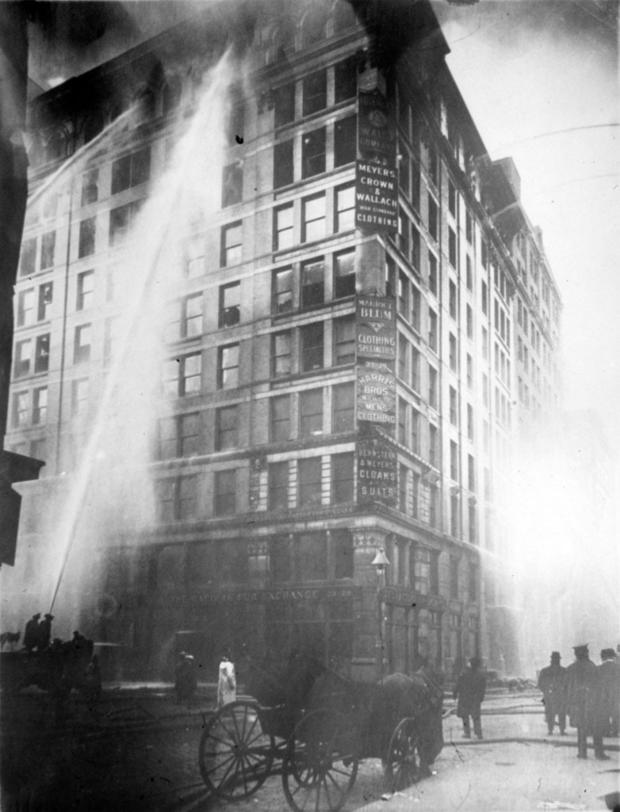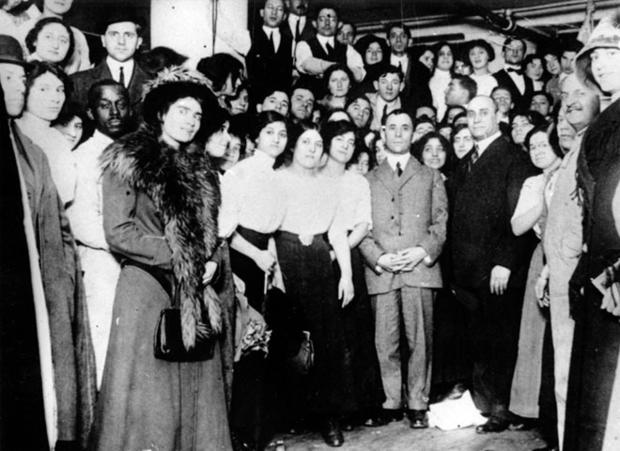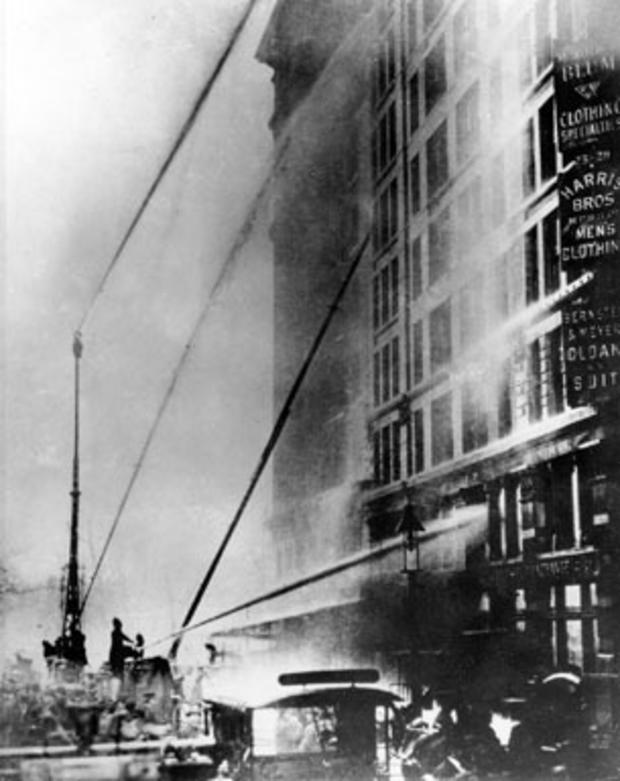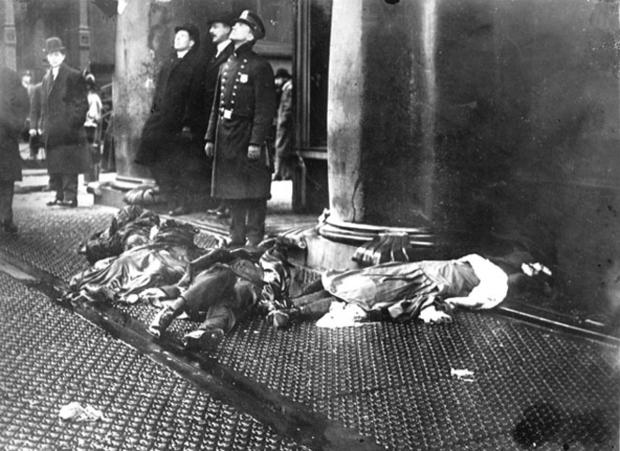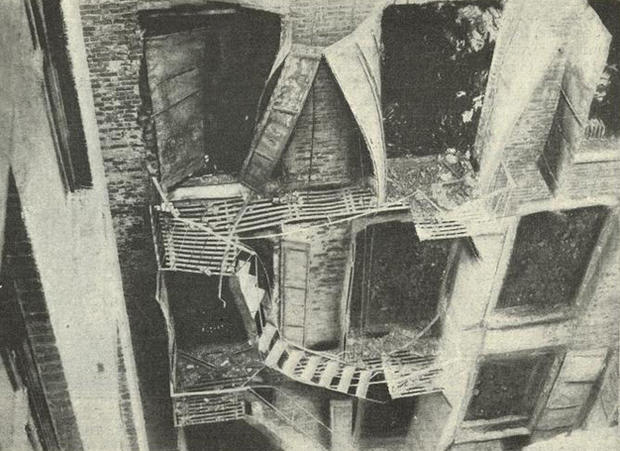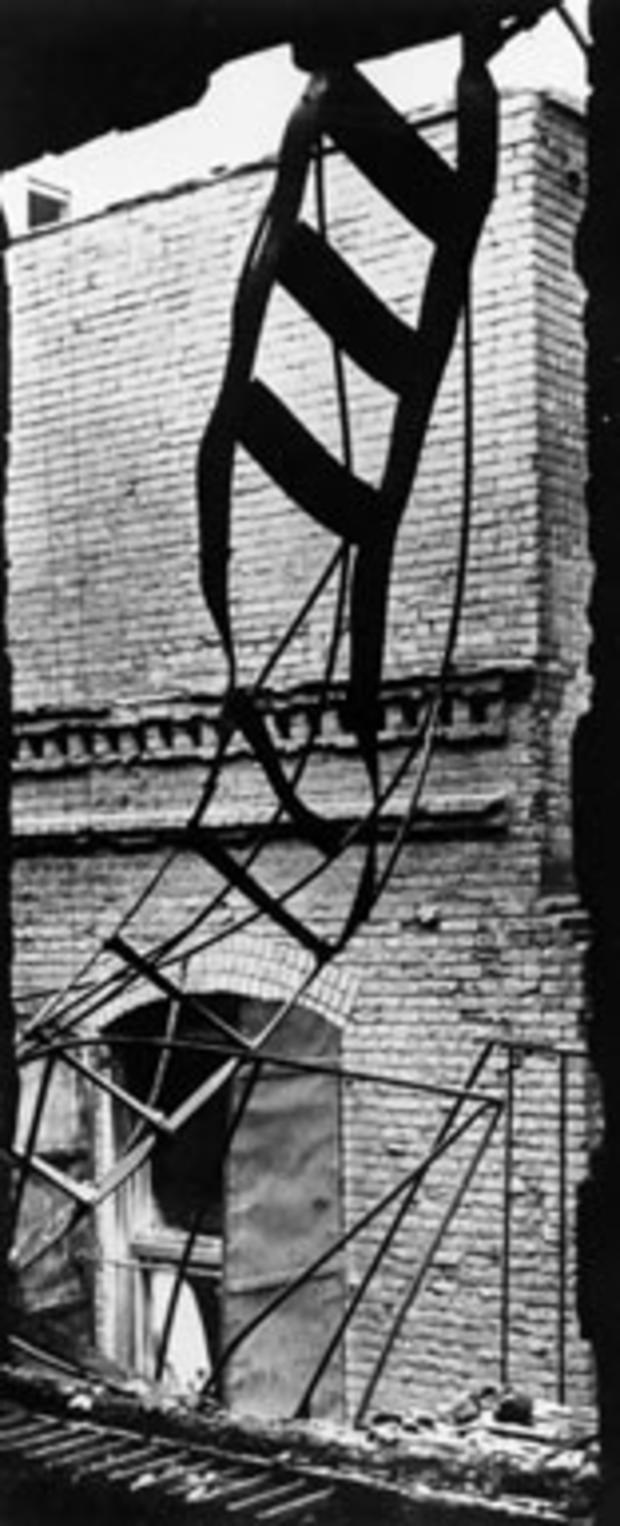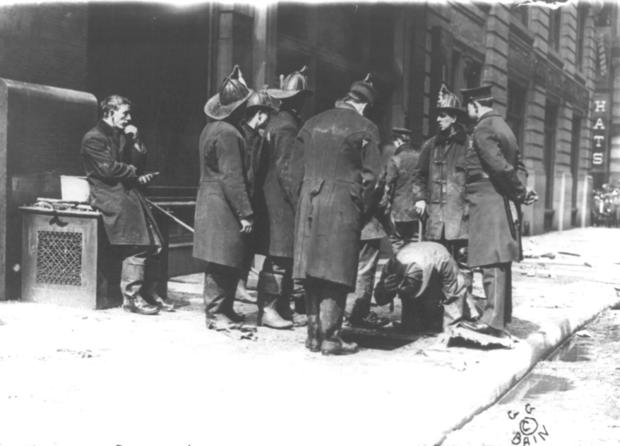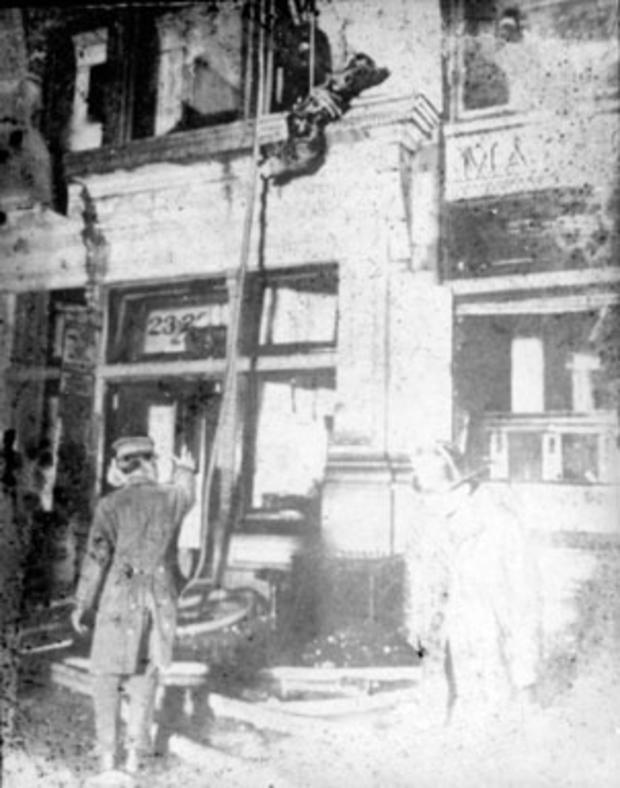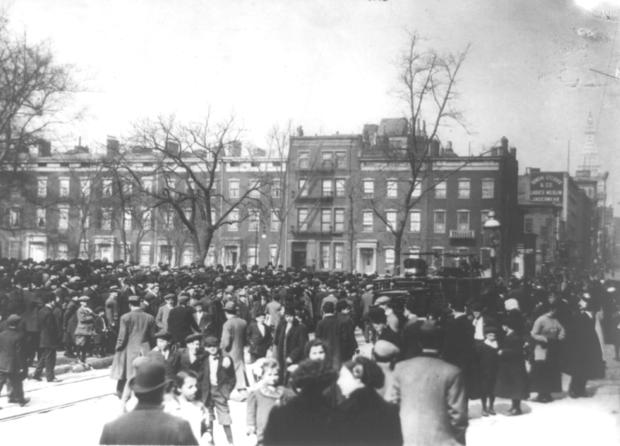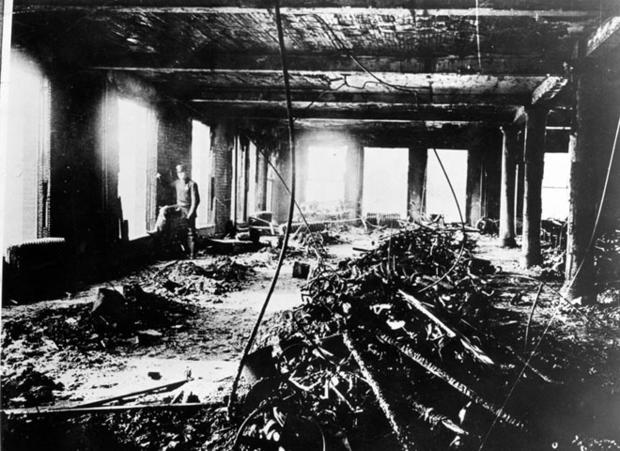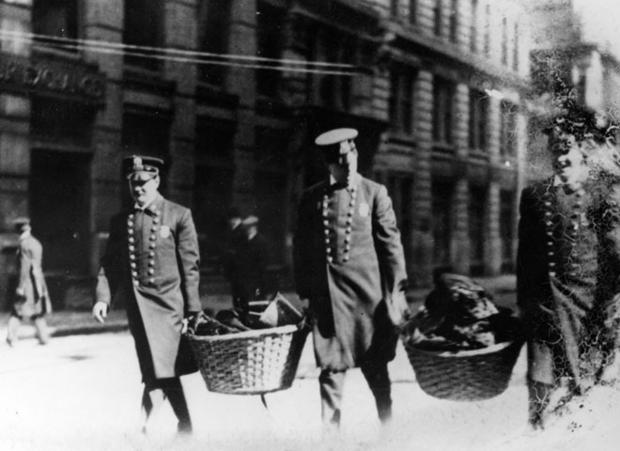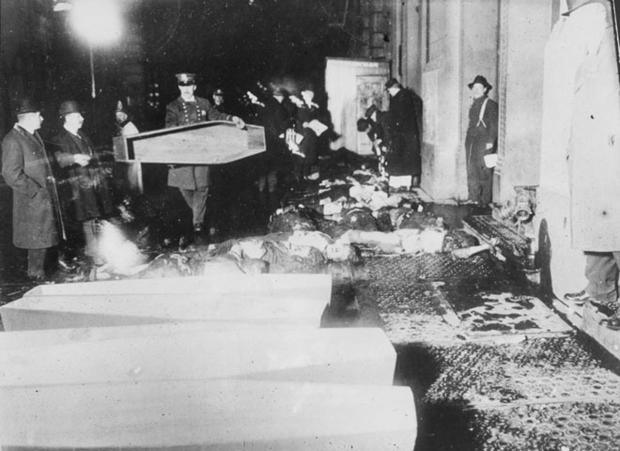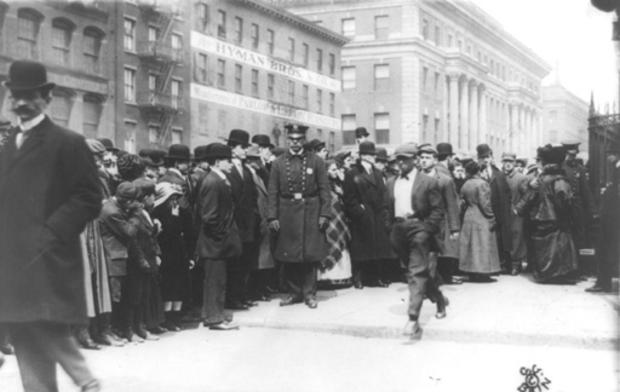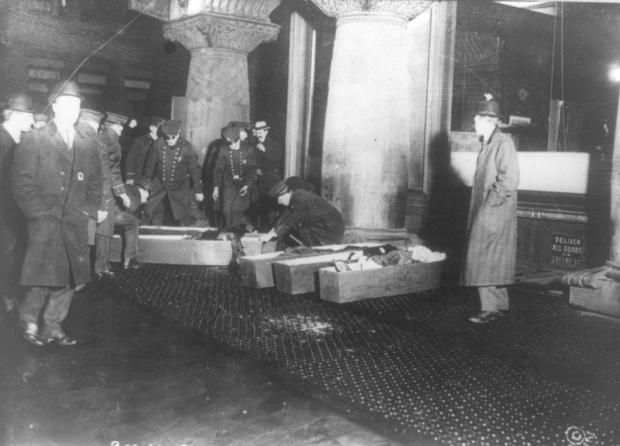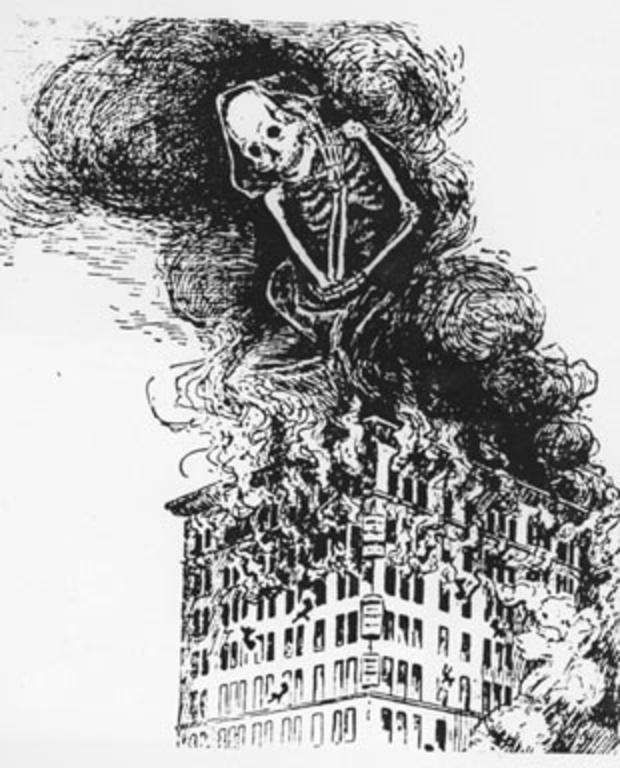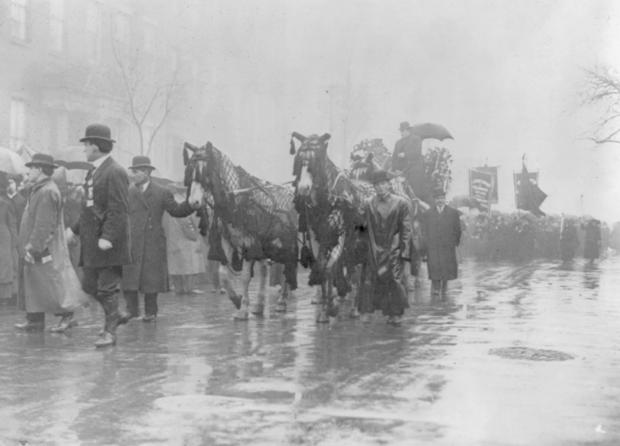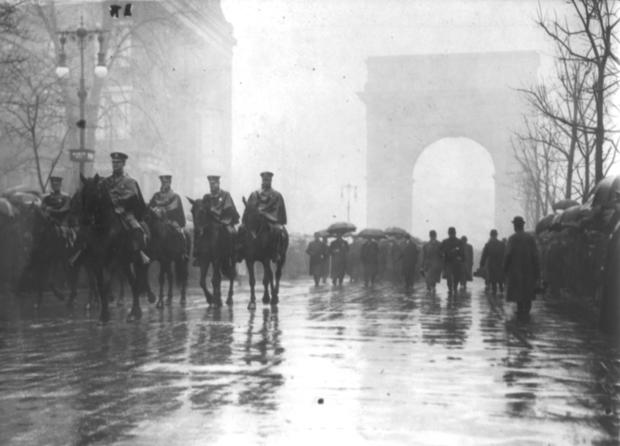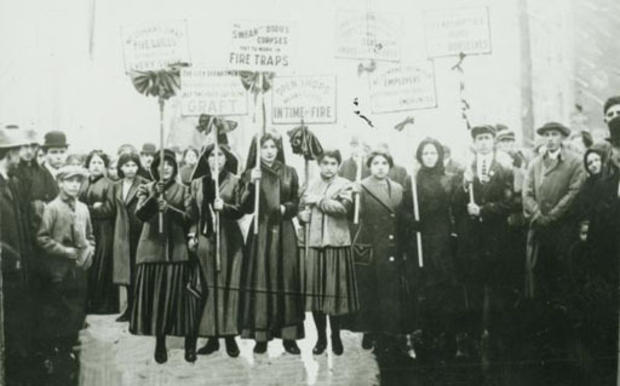The 1911 Triangle Fire tragedy
One hundred forty six garment workers -- 123 wome and 23 men --perished in one of the worst workplace disasters in U.S. history
Here, firefighters struggle to extinguish a massive blaze in New York City, March 25, 1911. Sprinkler systems, which were considered too costly by many factory owners, were not installed in the Asch Building. The fire was quickly controlled, though not before 146 lives were lost in one of the worst workplace fires in U.S. history.
Triangle Shirtwaist Factory Fire
Pictured c. 1910 are the owners of the Triangle Waist Company, Isaac Harris (front row near center with hands folded) and Max Blanck (in a dark suit to the right of Harris), with a group possibly of workers at one of their factories.
Triangle Shirtwaist Factory Fire
On March 25, 1911, a match or cigarette sparked a fire at the Triangle Waist Company. Horse-drawn fire engines are seen here on their way to the fire.
Triangle Shirtwaist Factory Fire
Firefighters from Ladder Company 20 arrived minutes after the alarm was sounded, but their ladders and hoses could not reach higher than the 6th floor. The spray was too weak to extinguish flames by the time it reached the top floors, but firemen hoped the mist would cool the panicked workers who had been forced onto window ledges by the heat, smoke and flames.
Triangle Shirtwaist Factory Fire
Because of locked doors and a lack of fire sprinklers, many workers were trapped in the building's top three floors. The single fire escape collapsed. Many had no option but to jump. A police officer and others standing among the bodies of Triangle fire employees who had jumped stare up at others poised to leap from the upper floors of the burning building.
Triangle Shirtwaist Factory Fire
Unrecognizable bodies lay on the sidewalk along Greene Street, together with hoses, fire rescue nets, and part of a wagon. All were drenched by the tons of water used to contain and extinguish the fire.
Triangle Shirtwaist Factory Fire
The only fire escape on the Asch Building would have taken three hours to empty the top three floors, where the employees of the Triangle Shirtwaist Factory were trapped by the fire of March 25, 1911. One survivor who climbed down an elevator cable, scraping the flesh from his hands as he did so, was found up to his neck in water at the base of the shaft.
Triangle Shirtwaist Factory Fire
Sections of ladder - which ended two stories above the ground - twisted and collapsed under the weight of workers trying to escape the fire.
Triangle Shirtwaist Factory Fire
Some people who jumped smashed through grates in the sidewalk. Here firemen look through a hole in the sidewalk, searching for victims.
Triangle Shirtwaist Factory Fire
Interior of the Asch building after the Triangle fire. It was from these windows on the 9th floor that many of the girls jumped. Many waited until their clothing was on fire before leaping.
Triangle Shirtwaist Factory Fire
Police and firefighters spent four hours lowering bodies from the building's upper floors once the flames were put out.
Triangle Shirtwaist Factory Fire
People crowd New York's Washington Square, adjacent to the scene of the Triangle fire.
Triangle Shirtwaist Factory Fire
Doctors examine bodies on the sidewalk for signs of life. Only a few survivors were found among those who'd jumped. Tags were placed on victims before removing their remains to a makeshift morgue, at the 26th Street pier.
Triangle Shirtwaist Factory Fire
A police officer stands at the Asch Building's 9th floor window. Sewing machines, drive shafts, and other wreckage of the Triangle Shirtwaist Company are piled into the center of the burned room.
Triangle Shirtwaist Factory Fire
Firefighters and policemen collected jewelry, handbags, money, pay envelopes and other personal effects from the bodies of victims and carried them to the morgue, where they were used to help identify the dead.
Triangle Shirtwaist Factory Fire
A police officer holds a small casket amid many of the bodies from the Triangle fire. A temporary morgue set up after determining the city morgue could not handle the large number of casualties.
Triangle Shirtwaist Factory Fire
Crowds line up outside the temporary morgue at the 26th Street pier, in search of missing loved ones.
Triangle Shirtwaist Factory Fire
The morgue brought not only distraught family members but also morbid curiosity seekers.
Triangle Shirtwaist Factory Fire
Triangle Shirtwaist Company fire victims are placed in coffins. Not all victims were identified.
Triangle Shirtwaist Factory Fire
The horror of the fire - which only heightened the injustices facing many sweatshop workers, particularly poor immigrants - created a public scandal. This newspaper illustration captured the rage felt about what was a preventable tragedy.
Triangle Shirtwaist Factory Fire
Draped in black, a procession in honor of the fire's victims is held in New York City.
Triangle Shirtwaist Factory Fire
Firemen on horseback participate in a trade union procession for Triangle Waist Company fire victims.
Triangle Shirtwaist Factory Fire
Mourners picket after the Triangle fire, carrying signs accusing shop owners of graft, locked doors, and managing workers in fire traps. Out of the ashes of the Triangle fire came new safety and fire regulations, child labor laws, and workman's compensation. The outpouring of support for working people galvanized the fledgling American labor movement.
by CBSNews.com producer David Morgan
